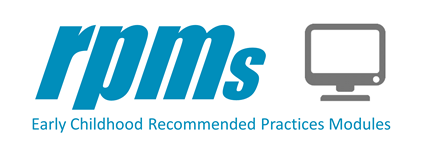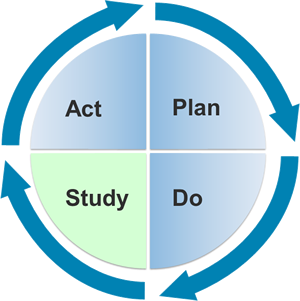Study
| Now that you have tried applying interactional practices, let’s take a step back and consider why and how you can gather and use the information to determine the following: |
|
1) Did you implement sensitive and responsive interactions with children the way they were intended?
“Children and families cannot benefit from interventions they do not experience” (Fixsen & Blase, 2008).
You can use the following checklists as a self-reflection tool or with a mentor (e.g., program director, program coach, faculty) or with a larger team to discuss and reflect on the extent to which you implemented sensitive and responsive interactions with children. You may use the checklists as they are to rate your use of interaction practices across the entire day or an assigned length of time:
- Adult-Child Interaction Checklist
- Child Social-Communication Interaction Checklist
- Child Social-Emotional Competence Checklist
- Child-Child Interaction Checklist
You may also adapt the checklists above and rate your use of interaction practices during specific activities:
2) How do you know if the change has resulted in an improvement in child outcomes?
Gathering information over multiple points of time will help you determine if your changes in practice have promoted positive child outcomes. You can use a simple observation form to note the changes in a child’s behavior, learning or development:
3) What worked well and what didn’t? What changes can you make to improve your use of sensitive and responsive interactions with children?
Review all the assessment information you have gathered and reflect and note what worked well and what didn’t. What areas of your practice can you improve to bring about better child outcomes? You can work with your mentor or with the child’s family to make changes to your practice.
Study Tips and Considerations (Adapted from Step 5: Evaluation, CONNECT Modules)
- Use multiple sources of information (family, teachers)
- Use multiple methods of gathering information (checklists, observation forms, formative assessments).
- Gather information over multiple points of time
- Involve the entire team, including the family, in planning, conducting, and interpreting information.
- Use information to improve your interaction practices

